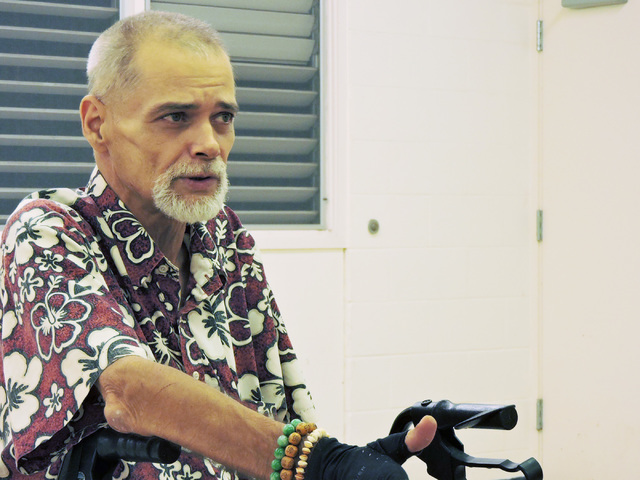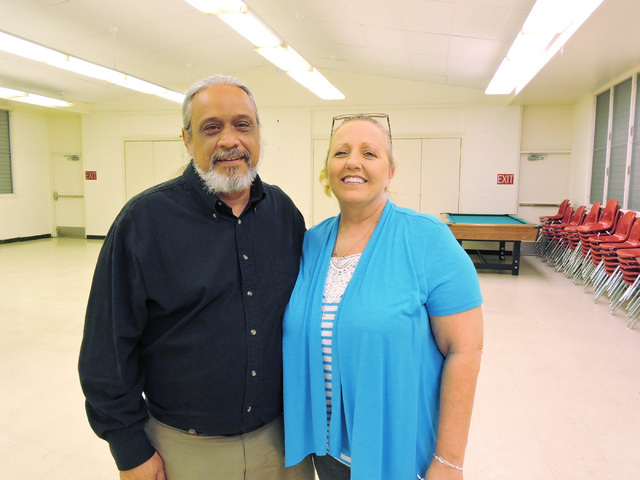East Hawaii residents wait in agony for pain pills that, too often, they can’t get without extraordinary effort.
Why?
The answer depends upon whom you ask.
Area physicians say their patients often get turned away at the counter because pharmacists don’t have enough pills on hand to fill even a single prescription.
Doctors and patients point fingers at the U.S. Drug Enforcement Agency, alleging the DEA puts limits on how many opioid pain pills a pharmacy can order each month.
But the DEA calls doctors and pharmacists liars. While, at the same time, a Hawaii legislator says part of the reason is drug addicts use up the supply of available pills before those who are truly in need can get to them. But he, too, says federal authorities limit supply.
Today, the Tribune-Herald lets those in the thick of the mess pass a metaphorical microphone around — to allow readers to decide, for themselves, what’s wrong.
When Teresa Keliikuli learned she’d need immediate surgery, she didn’t realize it would be tough to find pills, afterward, to treat her post-surgical pain.
Her prescription called for 40 pills.
She went to a store’s pharmacy “and they said, ‘we don’t have that many.’”
“They said their order came in ‘yesterday’ and they didn’t have any, and they were out within 48 hours,” she said.
Kirk Trombla, 58, of rural Pahoa, sits at the other end of the pain-control spectrum.
He takes feeble steps to navigate his walker even a couple of dozen feet — and then he must rest. His labored breaths come in wheezes between puffs on an inhaler.
Trombla suffers from what he emphasizes is genuine chronic pain and uses prescription opioids to dull it enough for journeys away from home. His doctor, he said, calls him “dependent” on opioids — not addicted. Without the pills, he said, he is unable to walk. He uses the pills to leave home, or if he has tasks to do.
Unfortunately, trips to the Hilo drugstore often turned into intolerably long journeys in which Trombla had to go from pharmacy to pharmacy to find one that had enough pills on hand to fill his prescription.
“I hate taking opioids,” Trombla said. “I hate it. I hate them. But I have to do it in order to be able to move around. If I don’t, I feel like I’m being impaled.”
Trombla was so frustrated that he organized a community meeting in Pahoa to see if the problem of un-fillable, but essential, pain prescriptions is as big as he believes.
About 10 people showed up.
Those who did said it was a small but good start, as a way to organize and fight for prescriptions they believe should be available, despite the growing trend of addictions to prescription opioids. They plan other meetings in the future.
For many years, the public and health providers got on a bandwagon that emphasized the importance of a patient’s right to adequate control of pain.
But the problem of addiction to prescription pain pills has become so widespread that push-back has occurred.
In September, the Associated Press published an investigation revealing that prescription-painkiller makers “have adopted a 50-state strategy that includes hundreds of lobbyists and millions in campaign contributions to help kill or weaken measures aimed at stemming the tide of prescription opioids, the drugs at the heart of the crisis that has cost 165,000 Americans their lives and pushed countless more to crippling addiction.”
That’s the double-edged sword of opioids.
For a small segment of society, such as hospice patients during the dying process, opioids can be one tool in the arsenal used to relieve torturous pain. Thus, the drug-makers’ efforts have made pain relief more available.
But people recovering after a car crash or back surgery risk addiction they might never have been susceptible to otherwise.
That’s something public-health experts want to avoid — and why they stand against the wind of the drug-makers’ campaign.
Trombla suffers chronic pain so severe that he feels like his hands “got slammed in a door repeatedly for the past two years, stung by 100 bees or stabbed over and over again.”
He’s been told his medical condition, which includes back and neck injuries, is terminal.
His arms are thin, he is dwarfed by his father, Richard, and it’s unclear, when they walk side-by-side, who is older.
Richard serves as a family caregiver for his son, offering rides to appointments, opening doors and offering a steadying hand when needed.
Trombla believes the DEA limits how much opioid medicine a pharmacy can order.
“I don’t think people like me should have to worry about getting their medicine when they’re dying,” he said.
Dr. Lynn Puana, a partner at Puana Pain Clinic, said patients get frustrated because “pharmacies won’t carry the medications.”
And Dr. Josh Turner, a pain specialist at Hilo Pain Clinic and board-certified neurosurgeon, said that “pharmacies are limited as to how much they can get.” Sometimes patients, he said, “can go to eight or 10 pharmacies to get a script filled.”
Opioids are no longer at the tip of Dr. Liza Maniquis-Smigel’s prescription-pad pen for her patients.
“I used to prescribe,” she said, “except they’d come back and say, ‘My pharmacy doesn’t have it,’” noting her treatments are intended to eliminate the need for opioids.
Joining the fray is CVS Health, parent company of Hilo’s Longs Drugs pharmacy.
“Ensuring that patients with a legitimate medical need have access to pain-relief medication is part of Longs Drugs purpose of helping people on their path to better health. Regulatory controls may limit the availability of certain controlled substances,” Amy Lanctot, senior manager of public relations, told the Tribune-Herald via email.
But Drug Enforcement Agency headquarters spokeswoman Barbara Carreno took umbrage at the views of Puana, Turner, Maniquis-Smigel, Lanctot and Trombla.
“That is absolutely false … there’s no limit on what a pharmacy can buy from a distributor,” she said.
Distributors make business decisions about how much to make available. But, Carreno said, “they blame it on us.”
The DEA took action against two pharmacies in the early 2000s for selling more opioids than would be expected for the population they served, she said, noting they were selling to customers from other states. If a pharmacy sells more medication than a population would expect to need, the DEA will review what’s happening and double-check that prescriptions are indeed being filled “in the course of usual professional practice.”
But it doesn’t set limits, Carreno said.
“We’re not doctors. We’re cops. We don’t tell them how to practice medicine,” she said.
Professional medical societies determine what is appropriate medical care, not the DEA, she said. If a medical board suspends the license of a physician to practice medicine, the DEA will not allow that physician to have a federal registration to prescribe opioids.
The DEA Los Angeles Field Division, which oversees Hawaii, took the argument a step further and pointed the finger back at doctors and pharmacists.
“We know it happens, for a pharmacist, or even a doctor, or somebody who actually would write a prescription — to deflect responsibility,” said Field Division spokesman Tim Massino. “In order to limit their own liability, some individuals do deflect by erroneously informing the patient, or the individual seeking the medication, that the DEA is limiting supply … they may blatantly lie and indicate they are out of whatever the customer is seeking.”
DEA Diversion Program Manager Marlon Whitfield agreed, and said prescriptions written by a licensed health provider are not questioned, because “we’re not medical professionals, so we wouldn’t have any reason to doubt that.” He said the DEA has no power to limit what medicines a pharmacy can order or dispense.
Patients who “doctor shop” until they find one who will write a prescription, forgers of prescriptions and drug-seekers who go to a relative’s medicine cabinet to get opioids all contribute to the problem, he said.
State Sen. Josh Green, an emergency-room physician, though, makes the opposite argument from the DEA.
“The reason we have that problem,” he said, “pharmacies get capped by the federal government as a percentage or as a part of their workload or their inventory.”
But he also said, “there’s probably a little bit of truth on both sides. Physicians are also human, too. And physicians can get a little bit hesitant about big, high-dose prescriptions. When a doctor inherits a patient and the patient takes a high dose, I would not be surprised if everyone starts deflecting a little bit of responsibility.”
Some with prescriptions, who are drug-seekers, Green said, don’t need the medication and “are displacing those who really do.” But to add context, he said, about 4 percent of the world’s population lives in the United States — but the U.S. is responsible for using 80 percent of all narcotics.
In Europe, the typical pain medication used is Tylenol. In the U.S., the typical drug is hydrocodone, Oxycodone, Percocet or Vicodin, Green said.
Hiromi Saito, president of the Hawaii Pharmacists Association, said she could not speak on behalf of the association. But she said it’s best if patients, providers and pharmacists communicate to make sure each patient’s pain-management plan is followed.
“Then pharmacies would be able to work together and anticipate for those prescriptions, and monitor the plan to avoid the possible risks,” she said.








